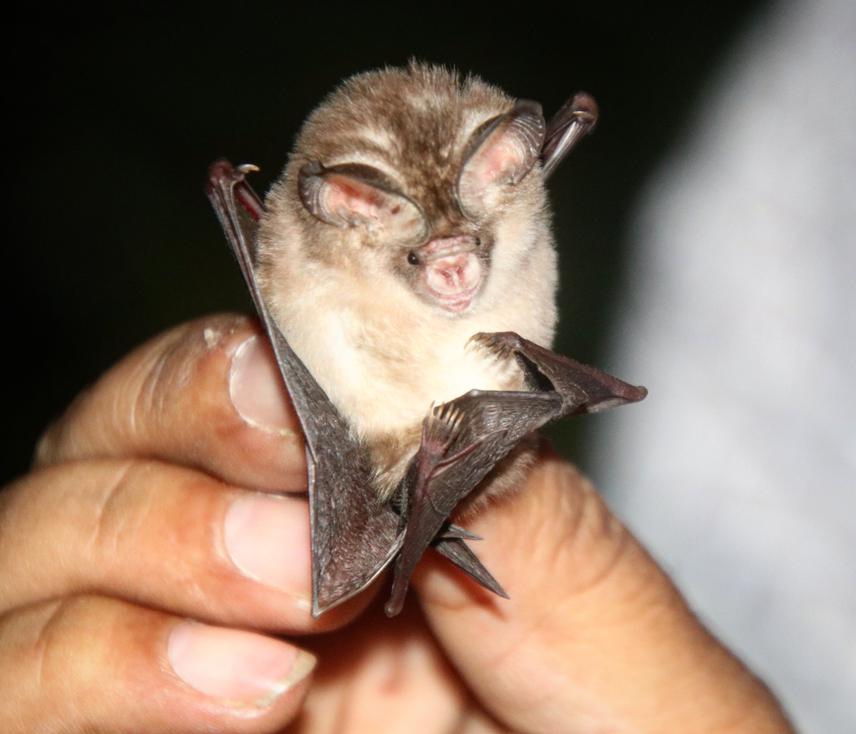Basant Sharma
Other projects
25 Jun 2019
Bats and Caves: Seasonal Monitoring and Conservation in Kaligandaki Canyon, Nepal
12 Mar 2024
Tracing Roots of Himalayan Biodiversity: Discovery, Description, and Conservation of Bats in Nepal
The main aim of this project is to excavate, extract and understand the current status of threatened as well as data deficient species of bats and provide lifeline support to survive in human dominated landscape by means of various conservation outreach programs.

Hipposideros cineraceous captured at Ranipauwa Myagdi.
Among 128 species of bats in south Asia (Srinivasulu et al. 2010), species profile of bat reveals 50 over species records in Nepal (Bates and Harrison, 1997, Acharya et al. 2010, Thapa 2010). Bats knowledge from Nepal is scanty and spare and seems incomplete. Many parts of western hills are still virgin land for bat exploration. Hence, it is assumed that there might be high chance of new record form Nepal with possibly occurring addition 17 species of bats (Acharya and Ruedas 2007)
Kaligandaki canyon separates the major peaks of Dhaulagiri on the west and Annapurna on the east. These two peaks are above 8000m standing in the opposite direction making the deepest gorge in the world. Kaligandaki River flows towards south through upper Mustang to Myagdi and Baglung. Previous record near the Kaligandaki area shows that there is presence of threatened species of bats. This area might seize primary habitat for Csorba’s Mouse-eared Myotis (Myotis csorbai, Topal, 1997) (an endemic bat of Nepal, Data deficient in IUCN, Critically endangered in national status), Mandelli's Mouse-eared Myotis (Myotis sicarius, Thomas, 1915) (an endemic to south Asia, Vulnerable in IUCN and national status), Common Bentwing Bat (Miniopterus schreibersii, Kuhl, 1817) (Near threatened in IUCN) and Harlequin Bat (Scotomanes ornatus, Blyth, 1851) (an Endangered in national status). Current status of these bats is still uncertain and unacquainted and undistinguished. This study in western mid hill of Kaligandaki watershed area is primary, preliminary and first research project which will generate baseline information on these species and prioritize conservation by means of various outreach programs.
Roost status, colonial size and bat species diversity in the area will be acquired and assumed to assist in future conservation practices. Additionally, various conservation activities like school teaching, documentary shows, drawing/essay competition and eco-tour will be organized to cultivate positive perception on bats among school students and locals.